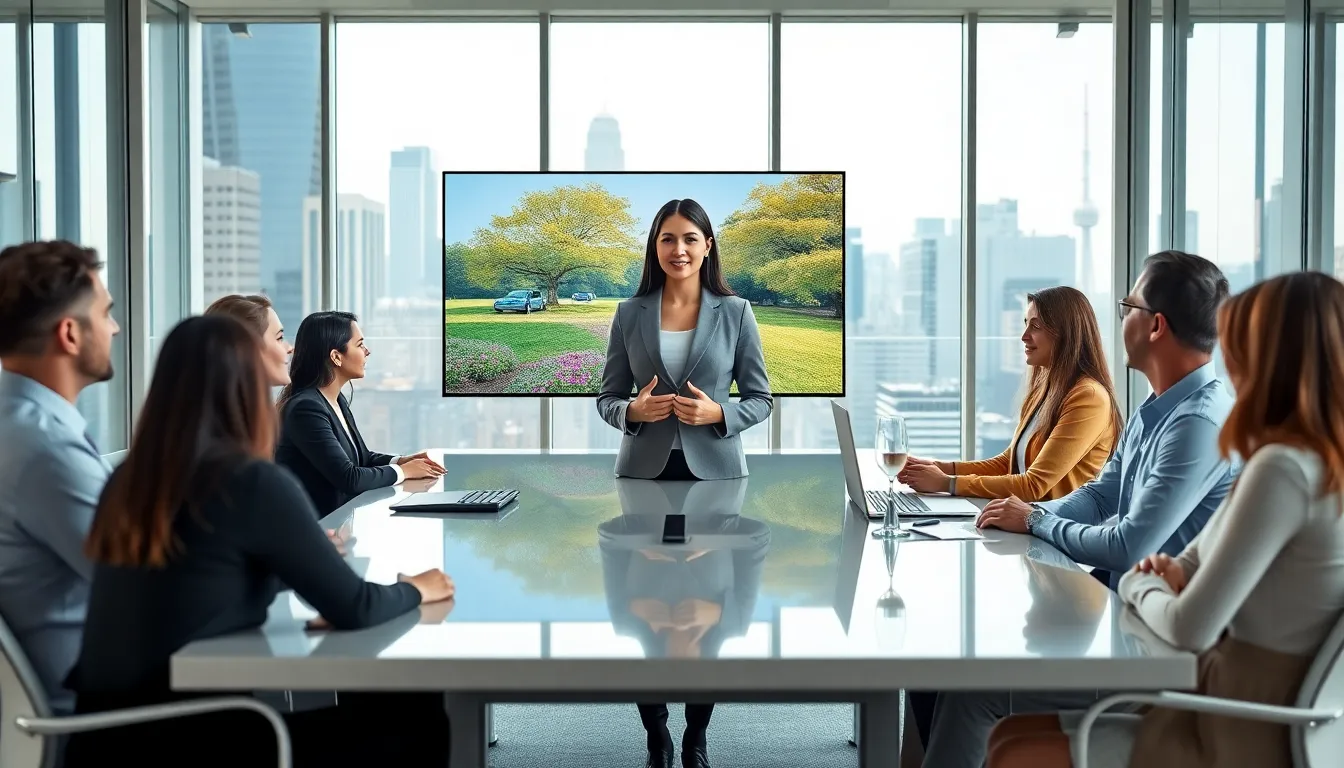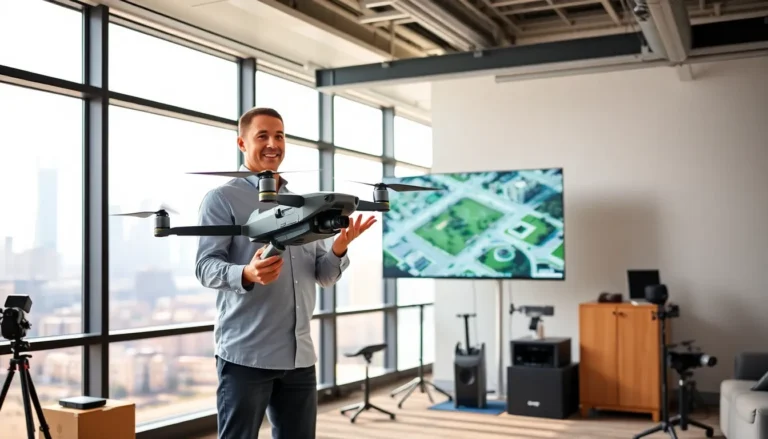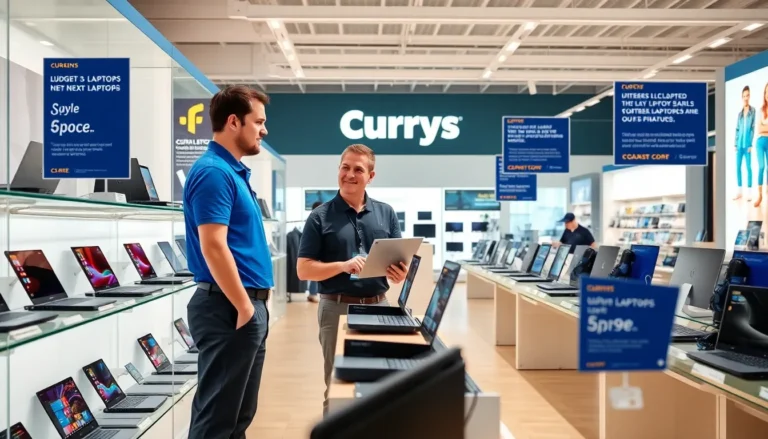In a world where reality is often blended with digital innovations, the terms mixed reality and augmented reality throw many for a loop. They sound similar, yet they serve distinctly different purposes. Imagine walking through a park and having virtual puppies leap out of your phone screen, inviting you to play. That’s augmented reality. Now picture a situation where your coffee table transforms into a battlefield for tiny robots right before your eyes. That’s mixed reality. Understanding these concepts clears up the confusion and opens up a wealth of possibilities. Buckle up as we deep-jump into the nuances that separate these two cutting-edge technologies.
Table of Contents
ToggleUnderstanding Augmented Reality

Key Features of Augmented Reality
Augmented reality (AR) overlays virtual objects onto the real world. This blending enhances reality by adding additional layers of information that interact with our environment. AR is accessible through mobile devices, smart glasses, and even heads-up displays. Notably, it doesn’t require a fully immersive experience, allowing users to remain aware of their surroundings.
One standout feature is the use of geolocation. When users point their devices at specific landmarks or locations, AR can provide real-time information like historical facts or directions. Can you imagine walking through a city and getting recommendations for nearby restaurants just by looking around? That’s the magic of AR.
Applications of Augmented Reality
AR is widely utilized across various industries. In retail, brands like IKEA have transformed shopping experiences. Customers can visualize furniture in their own homes using the IKEA Place app, making the selection process far easier and less time-consuming.
In education, AR has made learning interactive. Students can explore complex subjects like biology by using AR apps that bring 3D models of the human body right into the classroom. Many museums have embraced AR as well, allowing visitors to see additional artifacts or reconstructions of the exhibits through their smartphones.
Medical professionals leverage AR for surgical training and procedures, offering visual guides and overlays that improve precision. The possibilities seem endless, making augmented reality an exciting domain of innovation.
Understanding Mixed Reality
Key Features of Mixed Reality
Mixed reality (MR) takes things a step further by combining real and virtual worlds, allowing them to interact in real time. Unlike AR, where virtual elements merely overlay on the real world, MR creates an environment where virtual objects can interact with the real environment. This requires more advanced spatial mapping and tracking technology.
Imagine wearing mixed reality glasses where a virtual cat can jump onto your real couch and curl up, completely convincing you it’s there. MR seamlessly blends the physical and digital realms, creating an experience where both environments can coexist and respond to one another.
Applications of Mixed Reality
Businesses are leveraging mixed reality for simulation training. Pilots, for instance, can experience a lifelike flight environment, improving their readiness without stepping foot in an actual cockpit.
The entertainment industry is tapping into MR as well, offering immersive experiences in gaming and storytelling. Games like -HoloLens’ “Fragments” immerse players into a mystery adventure where they interact with virtual characters and objects within their actual space.
Architecture and design also benefit immensely from MR. Professionals can visualize projects in real surroundings, allowing clients to walk through constructions before they’re even built. From education to engineering, the applications of mixed reality are paving the way for future innovations.
Differences Between Mixed Reality and Augmented Reality
Technological Differences
When it comes to technology, AR mainly relies on simpler visual overlays while MR demands more complexity. While AR can function with a standard camera feed and basic sensors, MR requires advanced spatial mapping to understand the physical dimensions and context of the environment. This capability allows virtual objects to interact meaningfully with real-world elements.
User Experience and Interaction
From a user experience perspective, AR tends to be more casual and accessible. Users can engage with AR through smartphones without needing specialized equipment. In contrast, MR requires specific hardware like headsets for full immersion.
This difference impacts the nature of interactions as well. In AR, users might tap on their screens to interact with virtual elements, while in MR, they can move, manipulate, and even talk to virtual objects, creating a richer, more engaging experience.
Choosing the Right Technology for Your Needs
When deciding between mixed reality and augmented reality, it’s essential to assess one’s specific needs. Organizations should weigh the intended application, budget, and user engagement levels. AR might be the go-to option for businesses wanting quick deployment and interaction, especially in marketing campaigns or educational tools. Conversely, if someone seeks immersive training applications or demonstrative experiences, MR offers unparalleled interaction and realism.
The choice can significantly affect user satisfaction and effectiveness. Companies must consider their target audience’s preferences and the resources available.
Future Trends in Mixed and Augmented Reality
The future holds exciting potential for both mixed reality and augmented reality. As technology matures, we can expect faster processors, improved sensors, and more sophisticated algorithms that will enhance user experiences.
For AR, innovations like 5G connectivity will provide faster data transfer speeds, improving real-time interactions. This means users will enjoy seamless experiences without lag.
In the domain of MR, advancements in hardware may lead to lighter, more comfortable headsets that can be worn for extended periods. Integration with artificial intelligence will enable these devices to understand context better, making virtual interactions even more realistic.
Businesses are likely to invest heavily in these technologies, leading to products that become more ingrained in our daily lives, from work environments to entertainment spaces.





